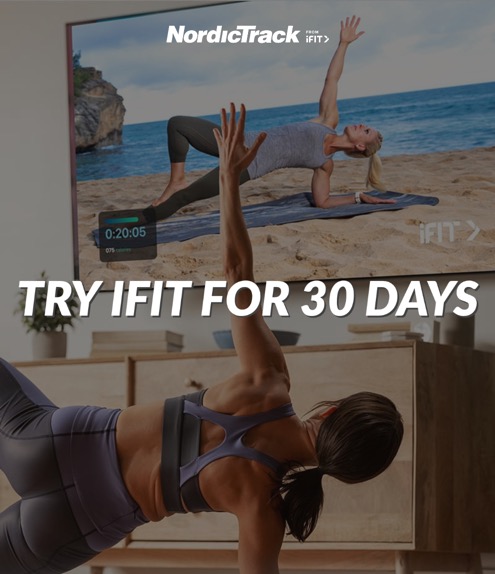Updated 08/28/2025

Walking on a treadmill is one of the simplest and most effective ways to begin a weight loss journey. It’s low-impact, easy to fit into your daily schedule, and accessible no matter your fitness level. But if your goal is to maximize calorie burn, the best incline to walk on a treadmill for weight loss can make a big difference in your results.
So what’s a good incline to walk on a treadmill to lose weight? Research shows that walking at inclines between 5% and 12% can significantly increase calorie expenditure compared to walking on a flat surface1. The right incline for you depends on your current fitness level, goals, and comfort — but the higher the incline, the greater the challenge to your muscles and cardiovascular system.
In this guide, we’ll cover:
- The calorie-burning benefits of incline walking
- How to choose the right incline based on your goals
- Recommended treadmill models designed for effective incline training
- Tips to stay safe and consistent as you progress

Benefits of Walking on an Incline
Walking on an incline adds intensity to your workout and can help you burn more calories than walking on a flat surface. In fact, research shows that the metabolic cost2 — the energy your body uses to move a certain distance — increases by 52% at a 5% incline and by 113% at a 10% incline compared to flat walking. That means more calorie burn in the same amount of time.
Incline walking also engages muscles that don’t work as hard on flat ground, including your calves, quadriceps, hamstrings, and glutes3. Over time, this added effort helps strengthen and tone your lower body while improving cardiovascular fitness.
The best incline is one that feels challenging but still manageable. For many people, the best incline to walk on a treadmill for weight loss falls between 5%–12%. And for optimal results, it’s helpful to vary your incline and speed throughout your workout. Not only does this keep things interesting, but it also pushes your body in different ways to avoid plateaus.
With all these benefits, an incline treadmill becomes more than just a cardio tool — it’s a pathway to stronger muscles, higher calorie burn, and better endurance.
Does the 12-3-30 Workout Work for Weight Loss?
The viral 12-3-30 workout has made incline treadmills more popular than ever. The format is simple: walk at a 12% incline, 3 mph speed, for 30 minutes4.
But does it really help with weight loss? While it’s a solid way to increase intensity, the truth is there’s no one magic formula. Sustainable weight loss comes from a consistent calorie deficit5 created by exercise and nutrition.
That said, 12-3-30 can be a great place to start if you’re new to incline training. It combines a challenging incline with a steady walking pace, making it approachable yet effective for calorie burn. Just remember — nutrition plays a major role. Even the best treadmill workout won’t offset poor eating habits.

How to Find the Best Incline to Walk on a Treadmill for Weight Loss
So, what’s the best way to walk on an incline treadmill to lose weight? It depends on your fitness level, but the key is to challenge yourself safely.
A good guideline is to use the RPE scale (Rate of Perceived Exertion)6, which measures effort from 0 (resting) to 10 (max effort).
- Warm-up (5–10 minutes): Walk at a flat incline, RPE 3–4.
- Main workout (20–30 minutes): Gradually increase incline to a level that feels challenging (RPE 6–7). Keep your pace brisk but sustainable.
- Cool-down (5 minutes): Lower incline back to 0% and reduce speed to relax your muscles and gradually bring down your heart rate.
- Stretch: Post-walk stretches for your calves, hamstrings, and hip flexors help prevent tightness and support recovery.
There’s no single “best” incline for everyone. Instead, aim for a level that makes you work harder than flat walking but still allows you to complete your workout with good form. Over time, as your strength improves, you can increase incline, add intervals, or explore structured iFIT walking programs designed for weight loss.
Featured Model: NordicTrack X24 Incline Treadmill
If you’re serious about incline walking for weight loss, NordicTrack’s X24 Incline Trainer takes your training further than most treadmills can. With up to 40% incline and -6% decline, it’s designed to mimic real-world terrain — from steep climbs to downhill walks.
Why the X24 Offers the Best Incline to Walk on a Treadmill for Weight Loss
- Incline/Decline: -6% to 40%
- Screen: Expansive 24″ HD touchscreen with iFIT global workouts
- Feel: Cushioned deck designed to reduce impact while mimicking soft dirt trails
- Best For: Calorie-burning incline walks, hikers, and anyone who wants to add maximum variety to their treadmill workouts
When paired with iFIT’s incline walking workouts, the X24 gives you one of the most effective ways to burn calories, build strength, and keep your training fresh.

The Bottom Line
Any incline that challenges you can help with calorie burn, but the best incline to walk on a treadmill for weight loss is one you can sustain consistently while still feeling challenged.
Walking on an incline builds strength, boosts calorie burn, and supports endurance, but there’s no single “perfect” workout. Pair your treadmill training with balanced nutrition and consistency, and you’ll be on the right path to lasting results.
If you’re ready to begin, explore incline training workouts available on NordicTrack incline treadmills, powered by iFIT. With world-class trainers and global routes, you’ll always have fresh ways to challenge yourself.
Step up to that incline, stay consistent, and let every stride move you closer to your goals.
FAQs: Walking on an Incline Treadmill for Weight Loss
Yes. The “best” incline is one that feels challenging for you and can be sustained consistently1.
Research shows that walking at a 5% incline increases calorie burn by about 52%, while a 10% incline can increase it by more than 100%2.
Yes. Walking uphill targets your calves, quads, and glutes, which helps tone your lower body3.
It can be — walking at a 12% incline, 3 MPH, for 30 minutes4 is a solid workout. But remember, long-term weight loss depends on consistency, variety, and balanced nutrition, not a single formula.
Yes. Walking on an incline burns calories, but long-term weight loss requires creating a calorie deficit through both exercise and diet5.
Use the RPE scale (Rate of Perceived Exertion). Aim for a 6–7 out of 10 during your main workout to balance challenge and sustainability6.
The NordicTrack X24 Incline Trainer offers up to 40% incline, making it one of the best options for maximizing calorie burn and muscle engagement.
Resources
- Mayo Clinic. Can I lose weight if my only exercise is walking?https://www.mayoclinic.org/healthy-lifestyle/weight-loss/expert-answers/walking/faq-20058345
- National Library of Medicine. Predicting the Metabolic Cost of Incline Walking from Muscle Activity and Walking Mechanics. https://pmc.ncbi.nlm.nih.gov/articles/PMC4504736/
- Harvard Health. Treadmills are among the most effective types of exercise equipment — if you know how to use them. https://www.health.harvard.edu/staying-healthy/get-smart-about-treadmills
- Cleveland Clinic. What Is the 12-3-30 Workout and Does It Work?https://health.clevelandclinic.org/12-3-30-workout
- Cleveland Clinic. Calorie Deficit: What To Know https://health.clevelandclinic.org/calorie-deficit
- National Academy of Sports Medicine (NASM). The Rate of Perceived Exertion (RPE) Scale Explained. https://blog.nasm.org/rate-of-perceived-exertion#:~:text=The%20rate%20of%20perceived%20exertion%20(RPE)%20scale%20is%20a%20technique,the%20intensity%20of%20their%20exercise.
Disclaimer: The primary purpose of this blog post is to inform and entertain. Nothing on the post constitutes or is intended to be a substitute for professional medical advice, prevention, diagnosis, or treatment. Reliance on any information provided on the blog is solely at your own risk. Always seek the advice of your physician or other qualified health provider with any questions you may have regarding a medical condition, and please consult your doctor or other health care provider before making any changes to your diet, sleep methods, daily activity, or fitness routine. Do not disregard professional medical advice or delay seeking it because of information available on this blog. NordicTrack assumes no responsibility for any personal injury or damage sustained by any recommendations, opinions, or advice given in this article. Always follow the safety precautions included in the owner’s manual of your fitness equipment.


